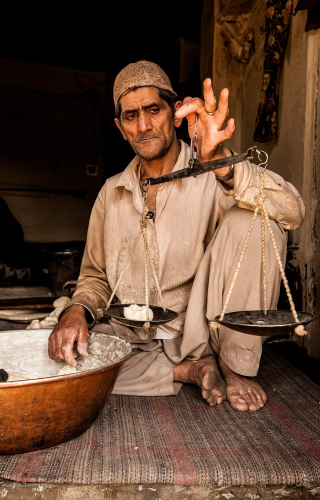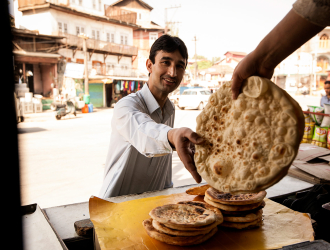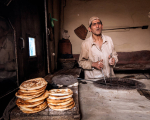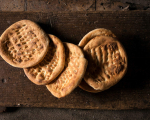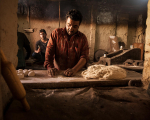I have always been fascinated by the Kashmir Valley and allure of the Himalayas. As someone from the plains, I have always been drawn to Kashmir’s breath-taking scenic beauty, and have returned several times to cover stories in this region. But Kashmir is much more than its beautiful landscape. On one such trip, after winding up an assignment, I decided to explore Downtown, the oldest part of Srinagar, dotted with mosques, Kanqahs and Sufi shrines stretching along the banks of the river Jhelum. Here, in the old mohallas, I took recommendations from the locals about where to find the legendary kandurwans.
Kandurs are bakers, who prepare a variety of homemade delicacies in clay tandoors. Similar bakers are also found in Pakistan and beyond, all the way to the Southern Caucasus, in Armenia and Azerbaijan. Tandoor became integral to Kashmir as part of the exchange of cultures along the ancient Silk Route which connected Jammu and Kashmir to Central Asia, Afghanistan, undivided Punjab and Iran. Tandoor is derived from Persian tanur, which means oven. The practice of breadmaking using a clay oven has been around since ancient times, and very little has changed in the way of technique. Kashmiris are, by and large, inseparable from their tandoori breads. Wherever they have settled in India, be it in neighbouring Ladakh or in New Delhi, the kandur has followed. While Leh has an entire lane dedicated to these traditional bakers (loved equally by the Ladakhi as well as the Muslim populations), Delhi also has had a history of kandurs wherever a sizeable Kashmiri population lived in the old city.
The smell of baked bread rising from the wood fired tandoor is a tough temptation to resist, more so for any Kashmiri, whose day is incomplete without a breakfast of hot bread. Work in the bakery starts well before dawn, when Downtown is still asleep. Bakeries match their activity to the namaz-e-fajrwhich is usually performed between dawn and daybreak. The first items to be fired on the tandoor are girdas and lavasas, savoured with a refreshing cup of kehwa(Kashmiri green tea) or nun chai(salted tea). After performing fajr, on their way back from the local mosque, elders pick up freshly made girdas and lavasas for the entire family. This way, the kandurwan (bakery shop) doubles up as a community space, where people discuss everything important and trivial, and catch up on neighbourhood gossip.
Every locality has their own kandurwan, often more than one. Each member of the family contributes a different task. While the women prepare the dough, men work on the tandoors, and children deliver the breads, often on their way to school. Getting invited to watch the daily activity in a kandurwan is as good as getting invited to their house. It is a busy space, with long hours of hard work. Early morning and late afternoon are the busiest.The warmth of the tandoor is matched by the warmth of the kandur. They were kind and patient enough to let me hang around and document the whole process, explaining to me the different breads they make, how they are best served and what flavouring ingredients are used in their making. For every variety of bread, the tandoor has to be prepared differently. The temperature varies for each type of bread. Around a dozen or so different types of breads are popular in Srinagar, though there are variations in different parts of Kashmir.
Some of the popular bread types are:
Tschot/Tsot: A must for every breakfast table, tschotis a medium-sized round bread. Also called girda, it is made from refined flour, kneaded with milk and salt. The kandur makes dented patterns on it with his fingertips, and it is baked till the crust turns golden. Another variation of this is ghee tschot, which as the name suggests, is made with generous amounts of ghee. It is bigger than the normal tschot and served along with rogan josh(wazwandish) at engagement ceremonies or during Ramadan.
Rural Breads: Two popular rural breads are makai tschot(corn flour) and tomla tschot(rice flour). Both these are flat breads made on a tawa, like a chapatti. Another variety is the aab tschot, which is like a pancake. The process to make it is similar to the South Indian dosa. A batter of rice is prepared and left overnight to ferment. Next morning it is mixed with water to get the desired thickness. The batter is then spread out on a hot tavaand greased with oil. While makai tschot is eaten with meals, aab tschot and tomla tschot are savoured with nun chai.
Lavasa: Lavasa is another everyday bread, similar to the naan made across North India, though it is thinner and made either soft or crisp. It is also used to wrap barbecued meats and chickpeas.
Tsochwor/Tilvor: The shape and size of tsochworresembles a bagel. It is a slightly hard bread, sprinkled with sesame seeds and served as a late-afternoon snack. It goes well with butter or jam or could also be dunked in a cup of nun chai.
Kulcha: Kulchais one of the most popular breads, available in both sweet and savuory variations. The sweet kulcha is made with generous amounts of ghee and is baked with a closed lid. Kashmiris love to dunk the kulcha in nun chai and then scoop out the creamy mixture with a spoon.
Namkeen Kulcha: This savoury version is decorated by placing a peanut or an almond in the centre of the upper face of the kulcha along with a generous sprinkling of poppy seeds. It is consumed on special occasions like weddings, Eid, etc.
Khatai: Khataiis the sweet version of kulcha. It is bigger than the namkeen variety and tastes best with a cup of kehwa.
Bakerkhani: Bakerkhaniis a layered variety of bread that looks like a puff pastry. It is prepared by coating layers of dough with ghee and is baked crisp in the tandoor. It is tradition to send large trays of bakerkhanis to in-laws on occasions of child birth and engagements.
Sheermal: Pampori sheermalis famous throughout the valley for its unique taste. This is a mildly sweet variety, prepared with date-flavoured milk, and paired best with kehwa.
Porathe: Poratheis like a puri, but 7 times bigger. One porathe can feed an entire family and can weigh as much as 1kg. These are very popular outside Sufi shrines across the valley and are served with sweet halva.
Roth: Rothis sweet, sponge-cake-like bread, garnished with dry fruits. It is baked for special occasions like engagements, weddings or child birth and served with kehwa. According to tradition, the bride’s parents pack this metre-long bread, decorated with almonds, cashews, and poppy seeds, for the journey to her in-law’s house. Another occasion when roth is distributed among friends and family is when a toddler takes his first steps.
Each region of Kashmir has its special bread. While Baramulla is known for namkeen kulcha, Pampore is famous for sheermal, Sophian for kripand Anantnag for katlam. While the daily breads have a short shelf life, the dry varieties can last for days at a stretch. Kulchas and sheermal made with ghee can last for months. Pilgrims to Haj carry special ghee kulchas, which serve as a comfort food on their travels. Different breads go well with different kinds of tea. Kehwa is an aromatic green tea, made with ingredients like saffron, cinnamon, cardamom and almonds. It is slightly sweet and is best served with lighter breads like bakerkhani and sheermal. Nun chai, on the other hand, is made with milk, butter and salt. It goes well with thicker breads like tschowor and kulchas.
Like its political landscape, the cultural landscape of Srinagar has also been changing slowly, with the opening of multi-cuisine restaurants, French bakeries and cafes. While food culture of a place does undergo change over time, the people of Srinagar have not lost any love for their breads, which they like cheap and served hot. Kandurs, however, have been experiencing change with the younger generation refusing to work in smoke-filled tandoors. Once they finish studies, they take up private jobs. Their parents don’t force them to stay back for the family business. To compensate the workload, families now hire locals when necessary.
Like all other aspects of Kashmiri life, the kandur’s business has also been severely affected by the three-decade-long strife in Kashmir and frequent curfews. Even when everything is shut down, the kandurwans keep their tandoors running, because bread is a daily necessity. Through all this economic, political and social anxiety, the kandurs have tenaciously kept faith in their craft. This is not only testament to their inner resilience, but they truly believe that as long as there are clear streams and open skies in the Valley, the bread will remain its lifeblood.
